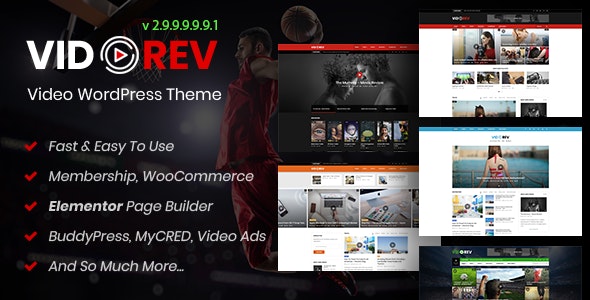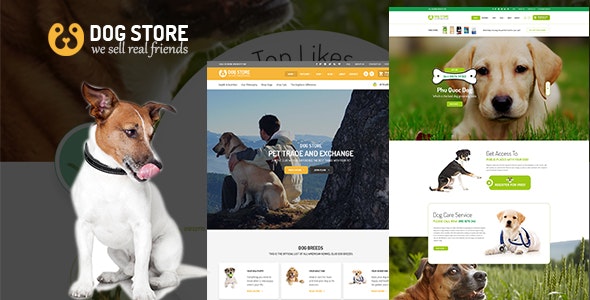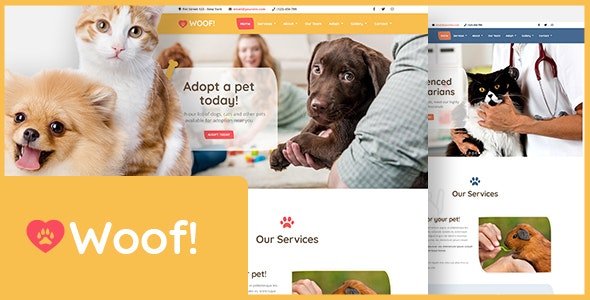
Mar 3, 2024 | Side hustle ideas, Small Business Ideas
Welcome to the dynamic world of videography, where creativity meets opportunity!
In today’s visually-driven society, the demand for captivating video content is skyrocketing.
Whether you’re an aspiring videographer or already have some experience behind the lens, this comprehensive guide will take you on a detailed journey of how to turn your passion for videography into a profitable and fulfilling career.
Start by Building Your Portfolio
Your portfolio is your calling card in the videography world.
It’s where you showcase your unique skills, style, and storytelling abilities.
Here’s a closer look at how to craft an impressive portfolio:
- Diversity Matters: Capture a range of projects, from personal passion projects to events in your local community. This diversity demonstrates your versatility and adaptability.
- Quality Over Quantity – Focus on producing high-quality footage that tells a compelling story. Pay attention to the technical aspects of videography, such as framing, composition, lighting, and sound.
- Embrace Storytelling – Remember that videography is about more than just pretty visuals; it’s about weaving a narrative that engages and emotionally resonates with viewers.
- Client Projects – As you start working with clients, ask for their permission to include your collaborations in your portfolio. Positive client experiences and testimonials can boost your credibility.
Approach Businesses and Offer Your Services
Prospecting for clients is the next crucial step in monetizing your videography skills.
Here’s a more detailed approach:
Market ResearchI
identify local businesses, marketing agencies, and organizations that can benefit from your videography services. Research their current marketing strategies and pinpoint areas where video can make a difference.
Compelling Pitch
Craft persuasive pitches that clearly communicate the unique value you bring to the table. Emphasize how your expertise can help them achieve their marketing goals, whether it’s boosting brand awareness, increasing engagement, or driving conversions.
Flexible Pricing Models:
Tailor your pricing to cater to various budgets and project sizes. Offering both hourly rates for smaller assignments and project-based fees for larger projects can attract a wider range of clients. Be transparent about pricing and what’s included in your services.
Advertise Your Services Online
In today’s digital age, your online presence is your storefront.
Here’s a closer look at effective online marketing strategies:
Professional Website:
Invest in a well-designed, user-friendly website that serves as your online hub. Your website should prominently showcase your portfolio, provide clear contact information, and include client testimonials to establish credibility.
Social Media Engagement
Leverage popular social media platforms like Instagram, YouTube, and LinkedIn to promote your videography business.
Consistently share your work, engage with your audience, and explore collaborations with influencers to expand your reach.
SEO Optimization
Optimize your website and online content for search engines.
Use relevant keywords, meta descriptions, and alt tags to improve your online visibility.
Local SEO strategies can also help you rank higher in local search results.
Join Professional Organizations
Professional associations offer valuable resources and networking opportunities.
Here’s a more detailed look at how to maximize your membership:
Networking:
Attend industry-specific events, workshops, and forums offered by professional organizations.
These gatherings provide excellent opportunities to connect with fellow videographers, potential clients, and equipment manufacturers.
Continuous Learning:
Take full advantage of the educational resources provided by these organizations.
Attend seminars, webinars, and training sessions to stay updated on industry trends and best practices.
Certifications
Some associations offer certifications, which can enhance your credibility and signal your commitment to professional development.
Attend Trade Shows and Conventions
Participating in industry events can be a game-changer for your videography career.
Here’s how to make the most of these opportunities
Networking Opportunities
Trade shows and conventions are ideal for building connections.
Attendees often include industry professionals, potential clients, and representatives from equipment manufacturers.
It’s a prime opportunity for building relationships.
Exposure to Technology
These events provide insights into the latest technology, trends, and techniques in the videography industry.
You can explore new equipment and software that may improve the quality and efficiency of your work.
Stay Up to Date with Technology and Trends
Remaining current with technological advancements and industry trends is crucial for success.
Here’s how to stay in the know
- Subscribe to Industry Resources
Follow blogs, forums, and industry publications that focus on videography.
These sources often provide insights into emerging trends and technologies.
Attend workshops, seminars, or online courses to enhance your skills and knowledge.
Consider courses on new equipment and software as well as courses on storytelling and editing techniques.
Join online communities or forums where videographers share their experiences and insights.
Engaging with peers can help you learn from their successes and challenges.
Tips and Tricks for Success
Here are some additional tips to excel as a videographer:
- Establish a Strong Brand Identity: Create a unique style and identity that sets you apart from competitors. Your brand should be reflected in your work, logo, and marketing materials.
- Niche Specialization: Consider specializing in a specific niche, such as wedding videography, real estate videos, or corporate promotions. Specialization can make you more attractive to clients seeking expertise in a particular area.
- Offer Free or Discounted Services Initially: To build your portfolio and gain exposure, consider offering your services for free or at a discounted rate to select clients. This can lead to valuable testimonials and referrals.
- Community Involvement: Volunteer your videography services for local events or charitable organizations. Not only is this a way to give back, but it can also help you network, gain exposure, and build relationships with potential clients.
- Collaborate with Others:Explore partnerships with local businesses, such as photographers, event planners, or marketing agencies. Collaborations can lead to mutually beneficial projects and referrals.
- Continuous Marketing:Consistently market your services through various channels, including social media, your website, and industry-specific platforms. Regular marketing efforts help attract new clients and keep you top-of-mind in a competitive market.
Need for a Website
Your website is your digital storefront, and it plays a critical role in showcasing your skills and attracting potential clients.
Here’s how to make the most of your website:
Aesthetics and User Experience:Ensure that your website is visually appealing and easy to navigate. A clean, professional design creates a positive first impression.
Portfolio Showcase: Your portfolio should be prominently featured, displaying your best work. Consider categorizing your projects to make it easy for visitors to find examples relevant to their needs.
Contact Information: Make it effortless for visitors to get in touch with you. Include a contact form, phone number, and email address. Consider adding a “Book Now” button for immediate inquiries.
Testimonials and Reviews:Incorporate client testimonials and reviews to build trust and credibility. If possible, include video testimonials to showcase the impact of your work.
Ready to take your Videography in to new heights online?
Contact us today, and let’s brew up a captivating website that captures the essence of your videography and attracts potential clients from all around!
To kickstart your videography’s online journey, here’s a list of themes that are perfect for your websites:
Congratulations, You’ve embarked on a journey to turn your passion for videography into a successful career!
Making money as a videographer requires dedication, creativity, and a strategic approach.
By following this comprehensive step-by-step guide, you’re equipped with the knowledge and strategies to establish a thriving videography business.
Remember, building a diverse portfolio, prospecting for clients, and effectively marketing your services are key starting points.
As you progress, engage with professional organizations, attend industry events, and stay updated with the latest trends and technology.
With passion, persistence, and a commitment to delivering outstanding work, you can transform your passion for videography into a fulfilling and profitable profession.
Capture moments, tell stories, and shine in the exciting world of videography!
Modern Videographer WordPress Theme
Rekam | A Modern Videographer WordPress Theme

Inview – Fullscreen Photography Videographer Theme

Videographer – Video Production WordPress Theme

VidoRev – Video WordPress Theme


Mar 3, 2024 | Side hustle ideas
Starting a coffee shop as a side hustle can be incredibly enticing. Imagine being your own boss, serving up delicious cups of joe, and making some extra cash along the way.
In this comprehensive guide, our objective is to walk you through the process of starting a coffee shop and show you how to turn it into a thriving side hustle.
Why Choose a Coffee Shop as a Side Hustle?
Specialty Coffee Trend
Specialty coffee is all the rage right now, with a growing demand for unique and high-quality brews.
Coffee aficionados seek out distinctive flavors and experiences, presenting a golden opportunity for coffee entrepreneurs.
Profit Potential
The coffee industry has incredible potential for profitability and long-term success.
People are passionate about their coffee, and they’re willing to pay a premium for a great cup.
The margins on coffee can be quite attractive, especially when you offer specialty brews or add-ons like flavored syrups and alternative milk options.
Flexibility and Scalability
What’s great about a coffee shop as a side venture is the flexibility and scalability it offers.
You can start small, perhaps as a weekend pop-up shop or mobile coffee cart, and gradually expand as your business grows.
This allows you to test the waters and minimize risks.
Research and Planning
Market Research
Before diving in, it’s crucial to do thorough market research.
Identify your target audience and check out the competition in your area.
Understanding your local coffee scene will give you a competitive edge.
Look for gaps in the market that you can fill with your unique offerings.
Startup Costs
Determine your startup costs, which include things like equipment, supplies, permits, and licensing.
Be comprehensive in your budgeting to avoid surprises down the road.
Knowing how much you’ll need to invest upfront will help you plan your finances effectively and secure the necessary funding.
Business Plan
Create a detailed business plan that outlines your concept, location, target market, and revenue projections.
Having a clear roadmap will not only keep you focused but also make it easier to communicate your vision to potential investors or lenders.
Your business plan should also consider factors like pricing strategies, marketing tactics, and long-term growth plans.
Finding the Perfect Location
Location Matters
When it comes to a coffee shop, location is everything.
Look for a spot that will attract your target audience.
Consider factors like foot traffic, parking availability, and proximity to other businesses that can complement yours.
If your target market includes students, consider setting up near a college campus.
For professionals, a location near offices might be ideal.
Creating an Engaging Menu
Menu Variety
Curating a menu that appeals to your target audience’s preferences is key.
Offer a variety of coffee drinks, from classic favorites like espresso and cappuccino to unique creations such as specialty lattes and cold brews.
Don’t forget about tasty snacks to pair with the coffee, such as pastries, sandwiches, and healthy options like yogurt parfaits.
Unique Offerings
To stand out in a competitive coffee market, consider incorporating unique and signature offerings.
Perhaps you have a secret recipe for a special flavored syrup or a one-of-a-kind coffee blend.
These exclusive items can set you apart from competitors and give customers a reason to choose your shop over others.
Quality Matters
Always prioritize quality ingredients and consistency in delivering exceptional coffee.
Invest in high-quality beans, fresh milk, and top-notch equipment.
The taste and overall experience you provide will be the foundation of your brand’s reputation.
Setting Up Your Coffee Shop
A. Permits and Licensing
Getting the necessary permits and licenses is a crucial step in the setup process.
Make sure to understand the regulations in your area and go through the application process properly.
Compliance with health and safety standards is essential in the food and beverage industry.
B. Interior Design
Design an inviting and functional space that enhances the customer experience.
Think about the layout, seating arrangements, and overall ambiance.
You want people to feel comfortable and want to stay awhile.
Consider the aesthetic elements of your shop, from the color scheme to decor.
Your interior design should align with your brand image and create a welcoming atmosphere.
Equipment and Supplies
Equip your coffee shop with reliable partners and suppliers.
Invest in high-quality equipment that will help you deliver consistent and delicious brews.
This includes espresso machines, grinders, milk frothers, and brewing tools.
Establish relationships with suppliers for coffee beans, dairy products, syrups, and other essential supplies.
Consistency in the quality of your beverages is key to building a loyal customer base.
Marketing and Branding
Marketing Strategies
To attract customers to your coffee shop, you’ll need effective marketing strategies.
Consider a mix of traditional and digital marketing tactics.
Social media campaigns, local partnerships, and engaging with the community are essential.
Word of mouth is also invaluable in the coffee world.
Encourage your early customers to spread the word about your fantastic coffee.
Branding
Branding is crucial for creating a strong identity for your coffee shop.
Design a logo and create branding materials that reflect the personality of your business.
These materials should be consistent across your signage, menu boards, and promotional materials.
Pay attention to the visual aspects of your shop’s interior design to ensure they align with your brand identity.
Additionally, consider the uniforms of your staff; they can be part of your brand’s representation.
Customer Loyalty
Foster customer loyalty by implementing loyalty programs and actively seeking customer feedback.
Happy customers will keep coming back, and they’re likely to refer friends and family.
Consider offering loyalty cards that reward frequent visits or purchases.
Actively engage with customers, both online and in-store, to build lasting relationships.
Customer feedback is invaluable for improving your offerings and addressing any issues promptly.
Managing Operations and Finances
Exceptional Service
Delivering exceptional service is essential for customer retention and positive reviews.
Hire and train staff who are passionate about coffee and providing an excellent customer experience.
Ensure that your team is knowledgeable about coffee preparation, can answer customer questions, and can offer recommendations based on individual tastes.
Inventory and Cost Control
To maximize profitability, you’ll need to manage inventory effectively and control costs.
Implement inventory tracking systems to monitor stock levels and prevent waste.
Develop pricing strategies that balance affordability and profitability.
Regularly review your costs and adjust your pricing as needed to ensure a healthy profit margin.
Financial Management
Stay on top of your finances by maintaining accurate records and seeking professional advice when needed.
Proper financial management is crucial to sustaining your coffee shop as a side hustle.
Consider working with an accountant or financial advisor to ensure your business remains financially healthy.
Track your revenue, expenses, and profits meticulously to make informed decisions and plan for the future.
Establishing an Online Presence
In today’s digital world, having a strong online presence can make all the difference in attracting customers and growing your coffee shop business.
Create a Website
Having a website is crucial as it serves as your online storefront. It gives you the opportunity to showcase your menu, highlight your unique offerings, and provide important information like your location and operating hours.
Make sure your website is visually appealing, mobile-friendly, and easy to navigate. Consider adding an online ordering system for customer convenience.
Ready to take your coffee shop to new heights online?
Contact us today, and let’s brew up a captivating website that captures the essence of your coffee shop and attracts coffee lovers from all around!
To kickstart your coffee shop’s online journey, here’s a list of themes that are perfect for coffee shop websites:
Embrace Social Media
Social media platforms like Instagram, Facebook, and Twitter can be powerful tools for promoting and showcasing your coffee shop.
Share mouthwatering photos of your delectable drinks, engage with your followers through comments and direct messages, and use features like Instagram Stories to give your audience a behind-the-scenes look at your coffee-making process.
Remember to interact with your followers, respond to their comments and messages, and build a sense of community.
Online Ordering and Delivery
Consider implementing an online ordering system on your website or through popular delivery apps like Uber Eats.
This allows customers to easily place orders for pickup or delivery, increasing your accessibility and expanding your reach.
Ensure that your online ordering process is user-friendly and that orders are fulfilled promptly.
Engage with Online Reviews
Customer reviews on platforms like Google, Yelp, or Tripadvisor can significantly impact your business.
Take the time to respond to both positive and negative reviews, showcasing your dedication to customer satisfaction.
Encourage satisfied customers to leave reviews and ratings, as positive feedback can help attract new customers.
Address any negative feedback professionally and aim to resolve customer concerns.
Blog and Content Marketing
Consider starting a blog on your website where you can share coffee tips, brewing techniques, and stories behind your specialty blends.
This helps establish you as an authority in the coffee industry and can drive organic traffic to your website.
You can also explore guest blogging opportunities or collaborate with influencers in the coffee niche to expand your reach.
Consistently produce high-quality content that educates, entertains, and engages your target audience.
Remember that building an online presence takes time, effort, and consistency.
Be sure to regularly update your website, post engaging content on social media, and respond to customer interactions.
By strategically using digital platforms, you can create a buzzing online presence and attract a steady stream of coffee lovers from near and far.
Get ready to brew some online success!
Modern WordPress Themes for Your Coffee Shop Business
Amaya – Coffee Shop WordPress Theme

Corretto – A Theme for Coffee Shops and Cafés

Barista – Modern Theme for Cafes, Coffee Shops and Bars


Mar 3, 2024 | Side hustle ideas
Are you seeking a side hustle that not only pays but also brings joy into your life?
Consider dog walking, a delightful income hobby that allows you to combine your affection for dogs with a steady source of additional income.
In a world filled with hustle and bustle, many pet owners find themselves unable to provide their canine companions with the exercise they need.
This is where you can step in, offering your services as a dog walker. We’re excited to introduce you to this fulfilling income opportunity that promises both financial rewards and personal satisfaction.
Why Dog Walking Is Ideal
Who needs a dog walker?
Imagine this scenario,dog owners with full-time jobs and jam-packed schedules genuinely love their pets but struggle to find the time to take them on those essential daily walks.
This is where dog walkers come to the rescue. They offer 30-minute strolls for dogs, typically charging between $20 and $30 for this invaluable service.
For many dog owners, a single walk isn’t enough. Some pets require two or even three walks a day to stay healthy and happy. Yet, their busy human companions simply can’t manage this demanding schedule.
This is where your role as a dog walker becomes even more critical.
The Potential for Earnings
Now, let’s talk numbers!
Smart dog walkers, whether you work for a reputable company or are self-employed, have the capacity to handle multiple furry friends at once.
This efficiency can translate to earnings exceeding $100 per hour. Imagine the financial possibilities that arise when you dedicate just one hour a day to this rewarding work—you could make up to $500 per week!
Who can be a dog walker?
Are you wondering if this income-generating hobby is the right fit for you?
The beauty of dog walking is its accessibility. You don’t need extensive training or specialized skills.
Instead, you require something far simpler: a genuine affection for dogs and a willingness to spend an hour outdoors, come rain or shine.
This income-generating hobby is akin to a part-time gig, making it perfect for those with some free time during the day. If you can commit an hour daily, either in the mornings or evenings, you’re well-equipped to embark on this fulfilling journey.
Opportunities are often more abundant in larger cities and affluent suburbs, where busy professionals cherish the services of reliable dog walkers.
Taking Your Dog Walking Hustle to the Next Level
Online Courses for Dog Walkers
For those looking to refine their dog-walking skills and knowledge, consider enrolling in online courses available on platforms like Udemy.
These courses cover vital topics such as dog behavior, first aid, and handling different breeds. With a deeper understanding of these areas, you’ll become a more confident and capable dog walker, reassuring both your clients and their furry companions.
Udemy offers a variety of courses tailored to aspiring dog walkers. Look for courses that cover:
- Canine Behavior: Understand the psychology of dogs, their body language, and how to effectively communicate with them.
- Pet First Aid: Learn essential first aid techniques for dogs, ensuring their safety during emergencies.
- Breed-Specific Knowledge: Gain insights into the unique needs and characteristics of different dog breeds.
These courses not only enhance your skills but also boost your credibility as a professional dog walker.
Social Media Marketing
To reach a broader audience and attract potential clients, harness the power of social media.
Create engaging posts featuring your furry clients, sharing informative content about dog care and safety.
Utilize targeted advertising to connect with pet owners in your area. Platforms like Instagram, Facebook, and Twitter can be potent tools for growing your dog-walking business.
Here are some social media marketing tips:
- Engage Your Audience: Interact with your followers by responding to comments and messages promptly
- Share Success Stories: Showcase the positive experiences of your furry clients and their happy owners.
- Educate and Entertain:Share informative posts about pet care, fun dog facts, or heartwarming dog stories.
- Run contests: organize dog-related contests or giveaways to increase engagement.
Consistency and authenticity in your social media presence can significantly impact the growth of your dog-walking business.
Building Your Own Website
Establishing a dedicated website for your dog-walking business adds a professional touch to your services.
Various website building platforms are available, such as WordPress, Wix, or Squarespace, that make it easy to create a website without prior coding knowledge.
Here’s what to consider when building your website
- 1. Choose a user-friendly platform. Option for a website builder that suits your technical skills and offers templates suitable for a dog-walking business.
- 2. Select an attractive theme. Themes can set the tone and style of your website. Look for themes that convey trustworthiness, professionalism, and a love for dogs.
- 3. Include Essential Information: Your website should have clear information about your services, rates, availability, and contact details.
- 4. Showcase Testimonials: Display reviews and testimonials from satisfied clients to build trust.
- 5. Integrate booking and contact forms. Make it easy for potential clients to reach out and request your services.
- 6. Utilize high-quality imagery: Use high-resolution images of your happy canine clients to create a visually appealing website
With a well-designed website, you can provide a seamless user experience for potential clients, making it easier for them to learn about your services and book your dog walking sessions.
If you’re ready to take your website to the next level and ensure it reflects the trustworthiness, professionalism, and love for dogs that you bring to your work, click here to explore our professional website design services. Let us help you create a website that stands out and attracts clients with ease!
Balancing Flexibility with Reliability
When it comes to how much work is required, flexibility is one of the most appealing aspects of dog walking.
You have the autonomy to choose the time you can commit. Whether it’s an hour a day, every weekday, or even both mornings and evenings, you have the freedom to tailor your schedule to your life.
However, the keys to success in this income-generating hobby are reliability and efficiency. Avoid taking on clients in vastly different locations to minimize travel time, which could lead to tardiness and unreliability.
Is it worth it?
If you’re someone who adores dogs and enjoys the outdoors, this line of work might not even feel like work at all. The upfront cost to start this income-generating hobby is minimal.
Those who prefer to keep things simple by working for a dog walking service can expect to make $15 to $20 per hour. On the other hand, those who build their client base can earn up to $100 per hour, potentially raking in $500 a week with just five hours of work.
That’s over $20,000 in additional income each year!
In conclusion, dog walking is more than just a side gig.
It’s an income-generating hobby that offers both financial benefits and personal fulfillment.
By combining your love for dogs with your entrepreneurial spirit, you can embark on a journey that not only pads your wallet but also fills your heart with joy.
With the right courses, a strategic social media presence, and a professional website, you can take your dog-walking income hobby to new heights. So, Unleash your potential, both financial and personal, by embracing the world of dog walking today! With dedication, you can turn this income-generating hobby into a fulfilling and rewarding venture that benefits both you and your four-legged clients.
So, why wait?
Grab the leash and start your dog-walking journey today!
Pets – Haustiere RTL WooCommerce WordPress Theme

Petie – Pet Care Center & Veterinary WordPress Theme

Woof! – Pet WordPress Theme

Roger – Pet Care WordPress Theme

Pet World – Dog Care & Pet Shop WordPress Theme















